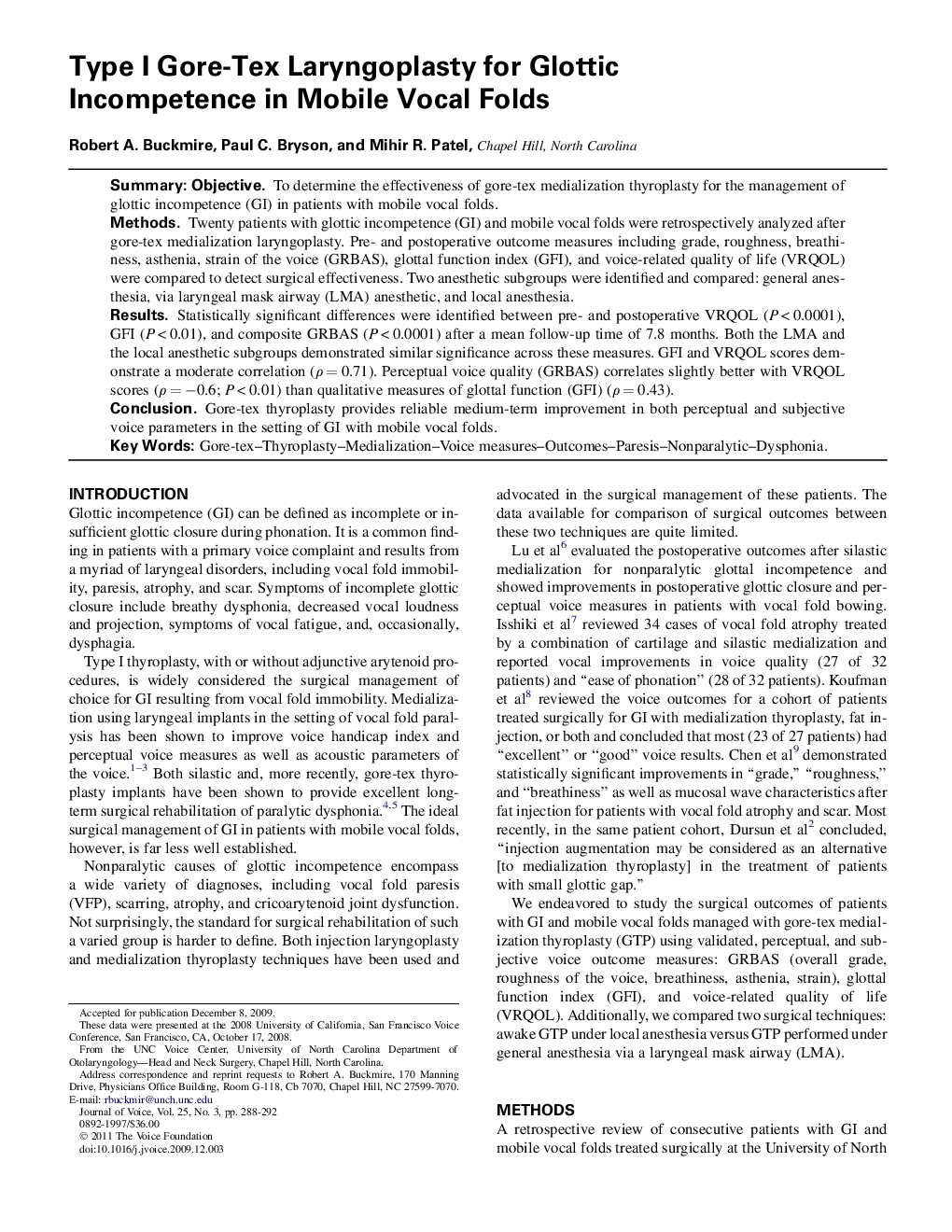| Article ID | Journal | Published Year | Pages | File Type |
|---|---|---|---|---|
| 1101918 | Journal of Voice | 2011 | 5 Pages |
SummaryObjectiveTo determine the effectiveness of gore-tex medialization thyroplasty for the management of glottic incompetence (GI) in patients with mobile vocal folds.MethodsTwenty patients with glottic incompetence (GI) and mobile vocal folds were retrospectively analyzed after gore-tex medialization laryngoplasty. Pre- and postoperative outcome measures including grade, roughness, breathiness, asthenia, strain of the voice (GRBAS), glottal function index (GFI), and voice-related quality of life (VRQOL) were compared to detect surgical effectiveness. Two anesthetic subgroups were identified and compared: general anesthesia, via laryngeal mask airway (LMA) anesthetic, and local anesthesia.ResultsStatistically significant differences were identified between pre- and postoperative VRQOL (P < 0.0001), GFI (P < 0.01), and composite GRBAS (P < 0.0001) after a mean follow-up time of 7.8 months. Both the LMA and the local anesthetic subgroups demonstrated similar significance across these measures. GFI and VRQOL scores demonstrate a moderate correlation (ρ = 0.71). Perceptual voice quality (GRBAS) correlates slightly better with VRQOL scores (ρ = −0.6; P < 0.01) than qualitative measures of glottal function (GFI) (ρ = 0.43).ConclusionGore-tex thyroplasty provides reliable medium-term improvement in both perceptual and subjective voice parameters in the setting of GI with mobile vocal folds.
